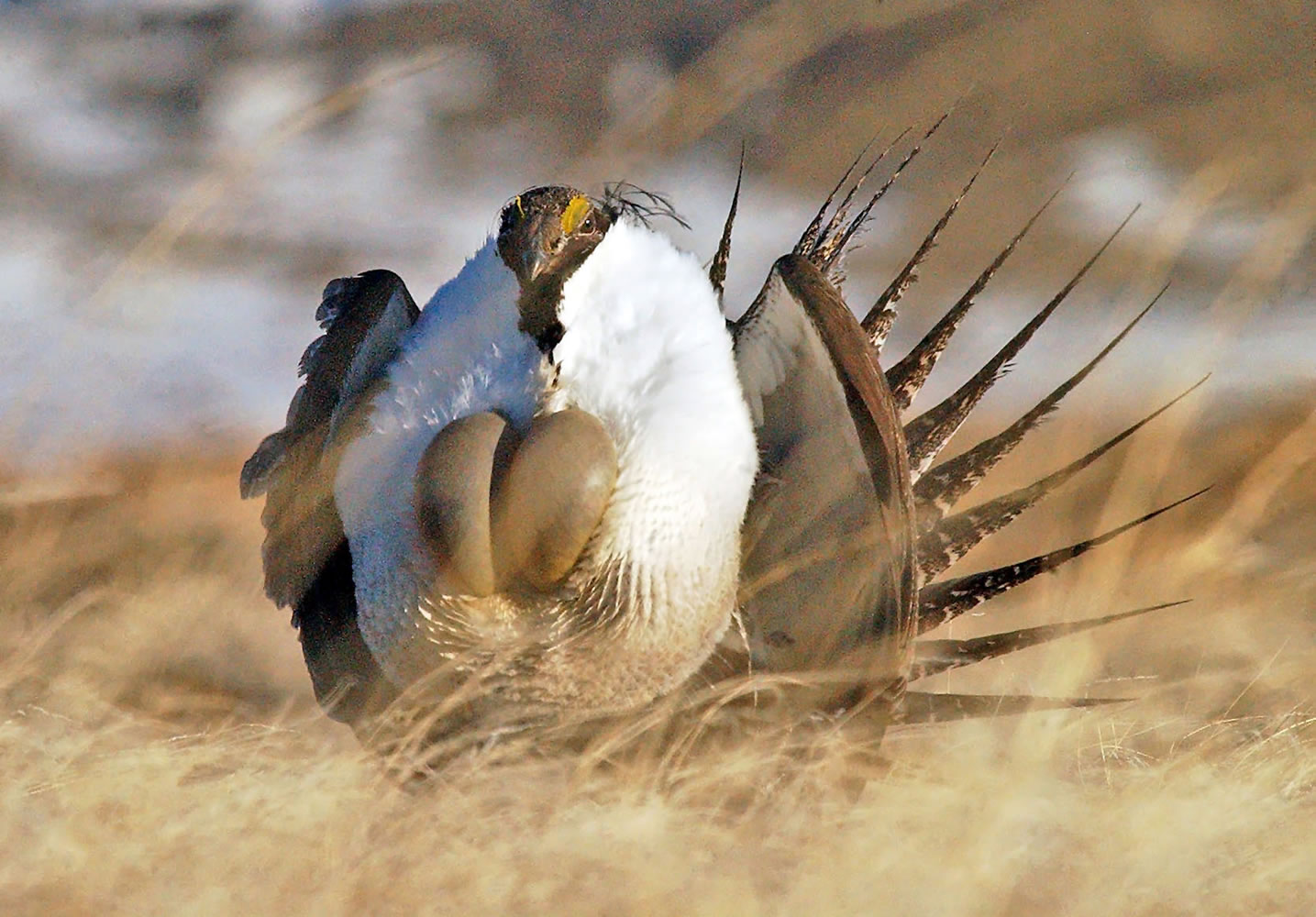SAN FRANCISCO — Federal wildlife officials on Friday proposed to list as threatened populations of greater sage grouse in Nevada and California in an effort to save the struggling species, a decision that promises to pose new challenges for ranching and energy development in the West.
The U.S. Fish and Wildlife Service found that invasive species and energy development in the desert have had a devastating effect on the large, ground-dwelling bird’s populations, said Ted Koch, Nevada state supervisor for the service.
“It’s not the 11th hour for sage grouse here, but it is maybe the 10th hour,” Koch said. “And that’s good news. It means we have some time and space to turn things around.”
The service found multiple threats facing this specific sub-population of the sage grouse, a chicken-size bird whose males have a large white tuft of feathers around their necks.
The service estimates there are only about 5,000 of the birds left.
Non-native pinyon pine and juniper trees introduced to the habitat and power lines have given low-to-the-ground perches for raptors, which eat the grouse, Koch said.
The service also found that an invasive grass from Asia that burns easily has helped decimate sagebrush, which is key to the grouse’s survival.
Industry, federal and local officials say a local effort already underway to save the bird is a promising start. Passed in 2012, the plan is being used by federal officials to help clear red tape for industry in the area.
Some state legislators greeted the proposed listing with suspicion, saying it could have wide-ranging economic impact on the rural economies in the region. Senate Majority Leader Harry Reid of Nevada said the decision will have “major ramifications” on the way of life in parts of Nevada and California.
“This listing is further proof that we need to work together to protect sensitive species before they get to such a dismal point and negatively affect our rural economies,” Reid said in a statement.
The final decision on the service’s proposal will occur next year, and the public will have 60 days to comment.
Ranchers, miners and energy developers who use the mostly public lands that serve as the sage grouse’s habitat have opposed the listing, saying it would have a deep economic impact in the rural West.
Friday’s proposed listing comes as the service is also determining whether the entire western sage grouse population should be federally protected. Sage grouse also live in Colorado, Idaho, Montana, North Dakota, Oregon, South Dakota, Utah, Washington, Wyoming and parts of Canada.
Ranchers worry that protections will scuttle or block outright vast grazing areas. They say it adds a lot of uncertainty to any plans to expand or even launch habitat restoration plans on their lands.
“For guys talking about expansion and going to the bank for loan, I’m not sure what the bank is going to tell me,” said JJ Goicoechea, a rancher and veterinarian who is president of the Nevada Cattlemens Association.
“And the rural economy is heavily dependent on those ranching families, who generate revenues that help keep towns and schools running. What’s going to happen to those rural communities?” he asked.
The Center for Biological Diversity, which sued the service to protect the sage grouse, said the decision was long overdue.
“The sage grouse we have here in Nevada and California is a true symbol of all that is wild — what a relief that it’s finally getting the protection it needs to survive,” Rob Mrowka, a Nevada-based center ecologist, said in a statement.



